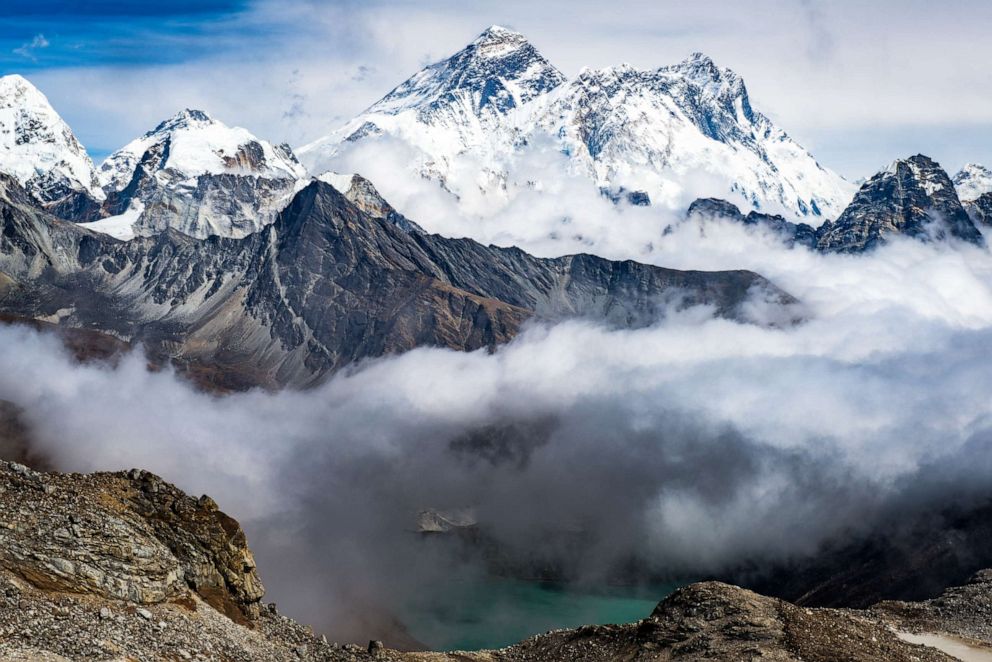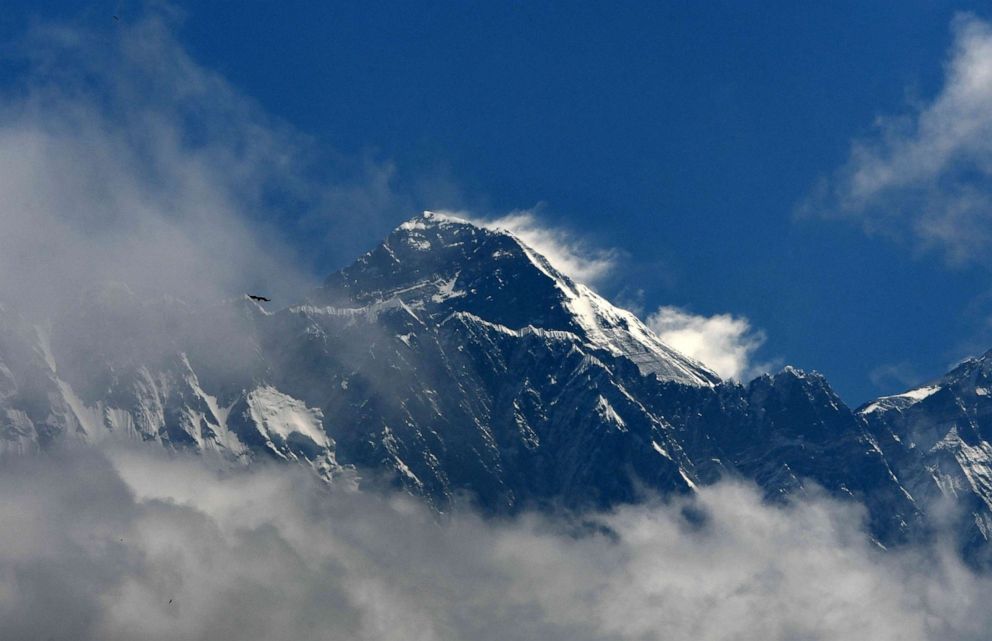So many people are dying on Mount Everest this year because of inexperience, experts say
This compounds problems inherent to climbing the world's highest mountain.
Eleven people have died on Mount Everest in 2019, one of the deadliest seasons in history.
There are two immediate reasons for this high number: a record number of permits were granted by Nepal, and the weather window for climbers to attempt the world's highest summit was about half as long as last year.
Last year, there was an extended weather window of 11 days in a row, when winds and other factors allowed climbers to reach the peak. There was a record numbers of summits, and five deaths, according to Everest expert Alan Arnette.
This year, the weather windows weren't continuous and much shorter. This meant that most of the climbers pushed up at the same time, creating dangerous, slow-moving bottlenecks as lines of people near the summit.
The root problem
But experts said those factors belie the root of many problems on Everest.
"Primarily, it's still the inexperience of the climbers, as well as the inexperience of a lot of the operators that are supporting those inexperienced climbers," David Morton, a Seattle-based climbing guide, told ABC News Live from Tibet, shortly after he returned from the north side of the mountain.
This lack of experience is exacerbated when various factors come into play, as they did this season. The narrow weather window led to a rush to the summit, leading to long lines and delays, and medical emergencies stemming from being in the "death zone" -- above 8,000 meters (about 26,246 feet) -- for too long.
Experience -- for both climbers and guides -- informs how to address each of those problems when climbing the world's tallest peak -- 29,029 feet.

Inexperience also exacerbates the issue of crowds, Arnette said, because as the number of support staff per permitted climber has increased, more people are on the mountain at one time.
Additionally, less-experienced climbers can create more hazardous situations for other climbers, especially if they're moving slowly in narrow lines, forcing everyone behind them to follow a slower pace.
Refusal to turn around
Many problems stem from a desire to reach the summit that outweighs an understanding of the need to abandon an attempt for safety.
To start with, there's the question of when to make a summit attempt. Many groups made a rush for the summit during the limited weather windows this year.
"Looking at that, if you were a mountain guide with mountain experience, or even a client with lots of mountain experience, it should just make sense you shouldn't go that day, no matter how good the forecast is," Adrian Ballinger, an Eddie Bauer mountaineer and CEO of Alpenglow Expeditions who was on the north side of Everest this season, told ABC News. "You have to choose the less perfect day with fewer people."
Alpenglow Expeditions sent teams to make summit attempts on May 22 and 24, skipping the 23rd -- which had an ideal forecast -- to avoid larger crowds. Three deaths were reported amid crowded lines on May 23.
Then there's the question of what to do if you started a summit attempt but conditions turn against you -- even if those conditions are long lines of people.
"When I see people dying only steps away on their descent or steps away from the South Col," Arnette told ABC News, "that tells me that they reached the end of their physical human limits, and they should've turned around sometime in the process of going up, not pushing it and then dying going down."
"Turning around is a very personal decision when it comes to the mountain when you're that high," said Krishma Poudel, manager of Peak Promotion. "Taking that kind of call at that height is completely dependent on the climber and their Sherpa. Usually, it's better to listen to your body and the weather. If you have that kind of crowd and you're stuck in that traffic, that will make it difficult."
Peak Promotion is a local Nepalese company established in 1992 that led one of the climbers who died this year.

Ballinger, who has summited eight times, made the decision to turn around in 2016 when he was making an attempt without oxygen.
"What I remember is, I don't remember much, and I think that's where experience does become so important," he said. "It became almost instinctual. It just became so obvious that I was going to get myself killed up there and that it just wasn't worth it."
Those decisions are especially difficult as the low oxygen levels impact your brain's function, and Ballinger said in that moment he "fell back on experience."
It does happen that a Sherpa tells a client they should turn around but a client refuses, putting both of them in dangerous and morally difficult situations. This dynamic is exacerbated by the fact clients pay in upwards of $30,000 to get to Everest and that a Nepalese Everest staff member is dependent on that payment -- especially with Nepal a poor country
Operator inexperience
This year, according to Ballinger, China, which controls the north side of the mountain, banned several companies from Everest that weren't meeting safety standards or helping with the mountain's trash problem.
No such efforts are apparent from Nepal on the south side.
"Nepal's choosing to take permit fees from anyone and allowing any company to set up as an expedition operator," Ballinger said, "and that's leading to this dramatic increase in the number or people, in the number of inexperienced people, and increasing number of companies that aren't ethically treating the mountain or their employees or even their clients."
This is one of the major reasons why Ballinger chooses to climb and run treks from the north (China) side, which had about a third the number of climbers this year as the south (Nepal) side.
With so many less-established and budget companies now operating, if a climber gets turned away by one because they don't have the required experience, that person can "shop around and find someone who's willing to take their $30-, $40,000," Arnette added.
"You've got, in my opinion, some really unqualified people guiding inexperienced people, and that's a toxic combination," Arnette said.
Operator inexperience can impact big picture decisions like when to make an attempt and more discrete questions, like what to do in a medical emergency above 8,000 meters. The question of experience ranges from company leaders and guides to high altitude workers and Sherpas.
Ultimately, though, climbing the world's tallest mountain will always present dangers.
"The human body was never designed to be at 8,000 meters, or to go for 20 hours on no sleep and no real food for the last three days," Arnette said. "It's a crazy, crazy sport of climbing 8,000-meter mountains, and there's a risk inherent within it. You can only mitigate that through some experience and common sense," he said.
"And still, people will die," he said. "It's part of the sport."




